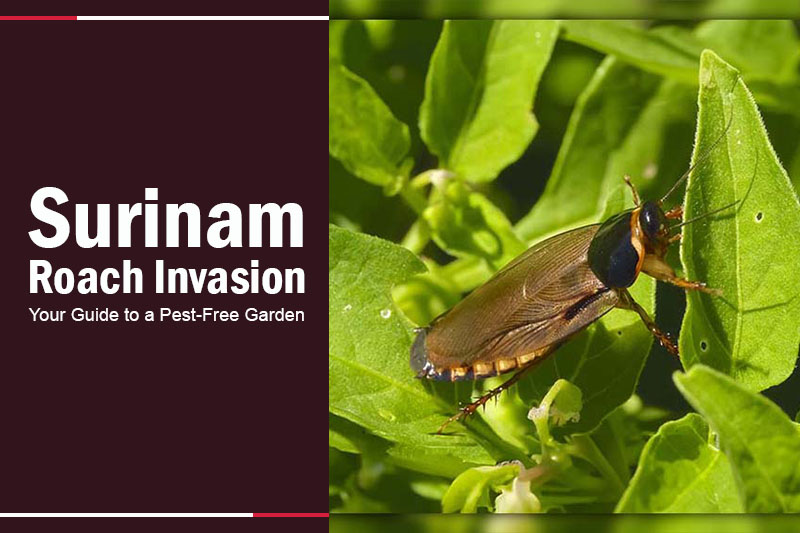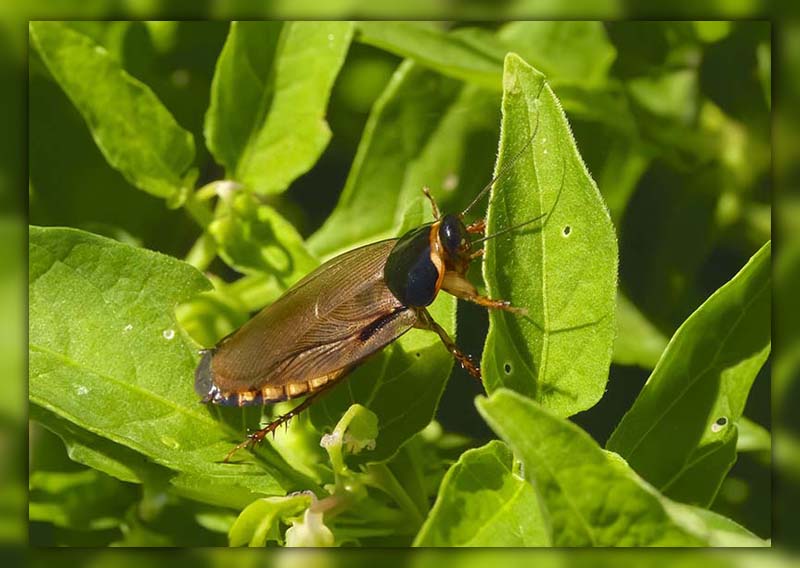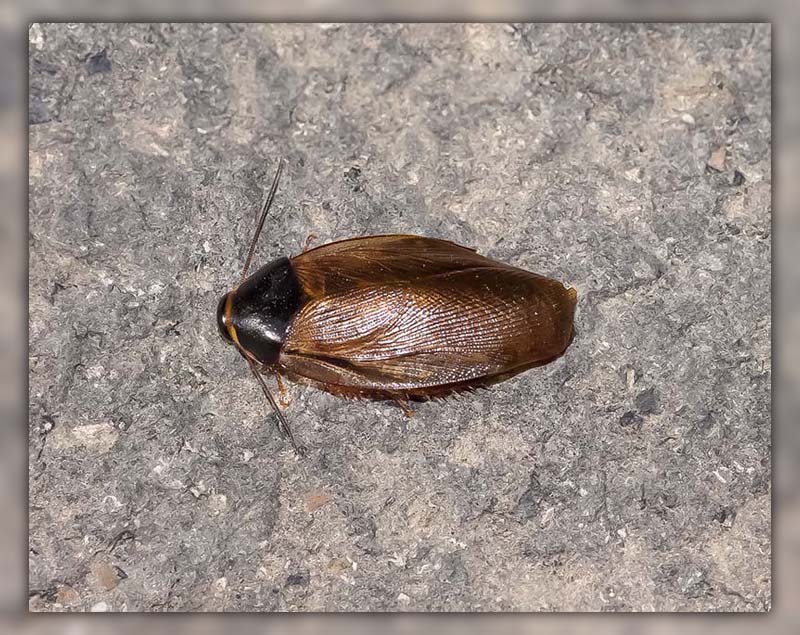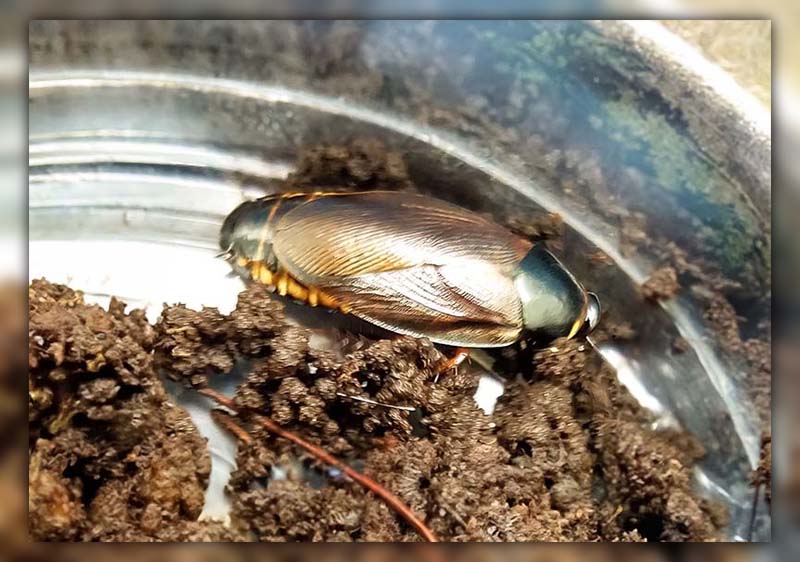Surinam Roach is no ordinary garden pest.
In this guide, we’ll explore their impact and arm you with strategies to reclaim your outdoor haven.

General Information about Surinam Roach
These roaches, also known as Suriname cockroach, originate from warm areas in the Southeastern United States and similar regions.
Finding a Surinam cockroach in your house might come as a surprise.
Known scientifically as Pycnoscelus surinamensis, these bugs are adept at hiding.
They often sneak into homes through plants or soil from gardens.
While they may not cause as many problems as other types of roaches, they can still be a nuisance once they’ve settled in.
The name Pycnoscelus surinamensis was given by the Swedish scientist Carl Linnaeus.
It is believed the first sightings of these roaches were in a place named Surinam, hence their common name.
Surinam cockroaches are unique in that they are exclusively female.
These lady roaches can lay eggs and produce offspring without the need for male roaches, a process known as parthenogenesis.
Read more Banana Roach: Exploring the Colorful Cuban Cockroach.
Surinam Roach Life Cycle
Cockroaches, including the Surinam Roach, grow in a straightforward way – they start from eggs, turn into little roaches called nymphs, and then become adults.
Female roaches lay egg groups in hard little pouches named “oothecae.”
Each pouch typically holds around 15 eggs and is often stuck or left near where roaches like to hang out.
When these eggs hatch, out come the nymphs. These nymphs look like tinier versions of grown-up roaches but they don’t have big wings or the ability to have babies.
Not all grown-up roaches have wings, though. These nymphs change their skin about 10 to 13 times before they become adults, and this whole process can take over a year.
Roaches aren’t picky eaters.
They munch on almost anything, and some types, sometimes, might even nibble on plants, causing a bit of harm.
Read more Death’s head cockroach: Nature’s Mysterious Marvel Revealed.
What do Surinam cockroaches look like?
To gain a better understanding of the distinctive appearance of Surinam cockroaches, let’s explore the details of their three main characteristics:
Dimensions of Surinam Roach
When they’re all grown up, Surinam cockroaches are usually a bit smaller than an inch long.
Coloration
These roaches have shiny, dark bodies.
They’re mainly black but their wings stand out – they’re either olive-green or deep brown.
This combination gives them a unique two-colored appearance.
The shield-like part covering their head, called the pronotum, is almost pitch-black.
Wing structure
Young Surinam roaches, or nymphs, don’t have any wings.
But when they become adults, they sport wings and can even fly.
This winged feature makes it easier to spot and differentiate them from other pests.
Where Do Surinam Cockroach Live?
To provide you with a comprehensive overview of the habitats of Surinam cockroaches, let’s examine the specifics of the two main environments where they thrive:
Areas with a warm indoor environment
Surinam cockroaches really don’t like the cold.
Born and bred in the warm regions of the tropics and subtropics, they need that heat.
When they end up in chillier places, they look for warm indoor spots to survive.
Places like greenhouses, malls, restaurants, offices, and any building with indoor plants are their go-to hideouts.
Reside in the soil
These roaches are diggers!
They usually make their home in loose soil, compost heaps, and mulch.
By day, they’re often tucked away in cozy, warm, dark spots like cracks or holes.
But come nighttime, these night-loving bugs are all out, often in big groups, looking for food.
What is the diet of Surinam cockroaches?
While many roaches come into our homes looking for water and food scraps, Surinam cockroaches are different.
They mostly eat plants.
They especially like to eat parts of plants that grow in the dirt where they live.
Since they eat plants and like places that are warm and a bit wet, they can be a real problem in warm greenhouses, eating and damaging the plants there.
Issues Arising from Surinam Cockroach Infestations
Surinam cockroaches can easily live and thrive inside once they are brought in.
If they go unnoticed and are allowed to have babies, these cockroaches can create big problems by harming houseplants.
On a bigger scale, if Surinam cockroaches invade places like greenhouses and shopping malls, they can ruin the indoor plants.
This makes the place look bad and can hurt the business of people who sell plants.
How to Get Rid of Surinam Cockroach
Surinam cockroaches are tiny burrowing bugs that can be a nuisance, especially for plant lovers.
But don’t worry, there are ways to deal with them.
Here’s a simple guide:
Use Roach Bait: This is like food for cockroaches, but it’s poisoned. Once they eat it, they’ll die. Many of these baits can handle water, which means you can use them in wet places like flowerbeds without them getting washed away.
Try Liquid Bug Killer: If you know where these roaches are hiding in the soil, you can pour liquid bug killer to drench the area. This will help kill the roaches deep down where they burrow.
Keep Up with Treatments: Because of weather, like sun and rain, sometimes the treatments wear off. So, you might need to use the bait or liquid again after some time.
Call the Pros: If you’re finding it hard to deal with these pests or if you just want it done right without the fuss, you can call pest control experts. They know what they’re doing and can help make sure these cockroaches are gone for good.
Read more German cockroach treatment
How to effectively control Surinam cockroaches
If you discover Surinam cockroaches, start tackling the problem outside, where these roaches usually make their homes.
Begin by getting rid of places where roaches might hide.
Clear away any dead leaves from flower beds, particularly close to your home’s foundation.
Move piles of wood away from your house and place firewood on a rack instead. You might need to get rid of landscape timbers, too.
Make sure to mow your lawn regularly and keep any weeds under control.
Conclusion
In wrapping up, Surinam Roach is more than just a fleeting garden intruder; it’s a formidable foe that demands our attention.
Share your tales in the comments below, and don’t forget to explore more insightful blogs from Pestweek for all things pest-related.

Calina Mabel has over 15 years of experience in the field of journalism and communications. Currently, Calina Mabel is the Content Writer for categories such as Cockroach, Ants, Bed Bugs, Mosquito, Rodent, Termite, and Flies on Pestweek.com. She aims to build content for these categories with a focus on providing valuable and accessible information to readers, in order to create the world’s largest knowledge community about Pests.
All content written by Calina Mabel has been reviewed by Emily Carter.




